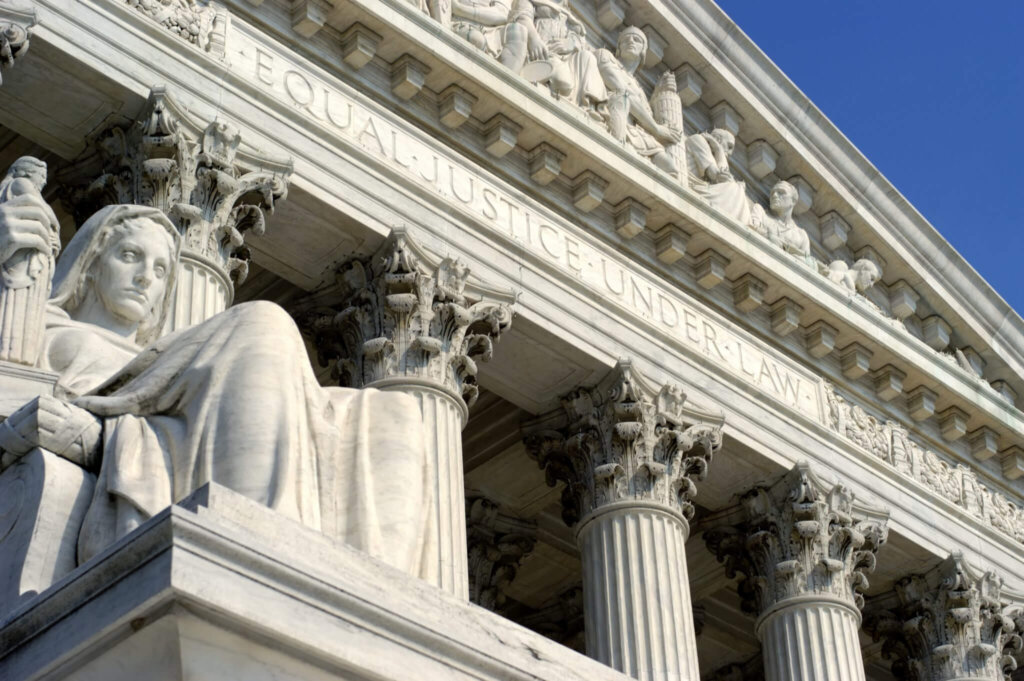Earlier this summer, the United States Supreme Court upset years of federal court precedent to broaden the protection of “trade secrets and commercial or financial” information from disclosure under the Freedom of Information Act (FOIA).
In Food Marketing Institute v. Argus Leader Media, the Supreme Court considered the scope of the “trade secrets and commercial or financial information” exception to the FOIA.
The federal government keeps data from an infinite number of businesses concerning their compliance with federal laws or programs. In earlier decisions, a governmental entity receiving a FOIA request was required to show a “substantial competitive harm” to the disclosing business to implement the exception and thus avoid producing categories of documents. In Argus Leader, the Supreme Court rejected this threshold and produced new questions as to what constitutes “confidential” information exempted from FOIA disclosure.
The dispute began when the Argus Leader, a Sioux Falls, South Dakota newspaper, filed a FOIA request with the U.S. Department of Agriculture (USDA) for redemption data for all stores participating in the Supplemental Nutrition Assistance Program (SNAP) program for a specific timeframe. The paper also wanted the names and addresses of all retail stores that participate in the national food-stamp program.
But the USDA withheld the data based on Exemption 4 to FOIA, which excludes “trade secrets and commercial or financial information obtained from a person [that its] privileged or confidential.” 5 U. S. C. §552(b)(4). The Argus Leader subsequently brought suit against the USDA to compel production of the SNAP redemption data.
At trial in U.S. District Court for South Dakota, witnesses for the USDA testified that retailers closely guard store-level SNAP data and that disclosure would threaten stores’ competitive positions. They said that retailers use models of consumer behavior to help select new store locations and to plan sales initiatives.
The district court ordered the USDA to disclose the requested information, applying the Eighth Circuit’s “substantial competitive harm test,” a test employed by many federal courts for nearly 45 years. The district court agreed that divulging store-level SNAP data could create some competitive harm, but it could not say that disclosure would cause “substantial competitive harm.” Thus, the district court ordered disclosure. The court held that although “competition in the grocery business is fierce,” the evidence failed to show that disclosure of such information would result in “substantial competitive harm” to the stores.
The USDA did not appeal. However, the Food Marketing Institute, a grocery retail trade association, intervened to appeal to the Eighth Circuit. The Court of Appeals affirmed, rejecting the Institute’s argument that the court should discard the “substantive competitive harm” test in favor of the ordinary public meaning of the statutory term “confidential.” The Court of Appeals held the USDA wasn’t required to disclose the store-level SNAP redemption data. The paper appealed, and the U.S. Supreme Court granted certiorari.
Justice Gorsuch delivered the opinion of the Court, in which Chief Justice Roberts and Justices Thomas, Alito, Kagan, and Kavanaugh joined. Justice Breyer wrote an opinion concurring in part and dissenting in part, in which Justices Ginsburg and Sotomayor joined.
Justice Gorsuch and the Supreme Court majority rejected the “substantial competitive harm test,” holding that the test had no foundation in FOIA’s statutory language. Rather, Justice Gorsuch explained the plain meaning of the term “confidential” and announced two potential criteria: (i) information that is “customarily kept private, or at least closely held,” by the submitting entity; and (ii) information for which the government provides “some assurance that it will remain secret.”
Justice Gorsuch wrote, “Notably lacking from dictionary definitions, early case law, or any other usual source that might shed light on the statute’s ordinary meaning is any mention of the ‘substantial competitive harm’ requirement that the courts below found unsatisfied and on which Argus Leader pins its hopes.”
The Supreme Court held the first element must always be established to invoke Exemption 4 protection. “[I]t is hard to see how information could be deemed confidential if its owner shares it freely,” Justice Gorsuch wrote. But the Court didn’t address whether the second element is required. Gorsuch wrote, “there’s no need to resolve that question in this case because the retailers before us clearly satisfy this condition too.”
In the end, Justice Gorsuch and the majority concluded that protection under FOIA Exemption 4 is warranted “at least where commercial or financial information is both customarily and actually treated as private by its owner and provided to the government under an assurance of privacy.”
The Supreme Court held that “[a]t least where commercial or financial information is both customarily and actually treated as private by its owner and provided to the government under an assurance of privacy, the information is ‘confidential’ within the meaning of Exemption 4.”
Justice Breyer wrote in his dissent that while the majority described two conditions, he believed that there is a third: “Release of such information must also cause genuine harm to the owner’s economic or business interests.” Disclosure of confidential information can result in business serious harm “not so directly linked to competition,” Justice Breyer wrote.
The Court’s desertion of the extensively applied “substantial competitive harm test” created an avenue for FOIA challenges to prevent the disclosure of information that was just private or embarrassing—and didn’t rise to the level of competitive harm to the business if disclosed.
Breyer said he would remand the case for a determination as to whether, in this instance, release of the information at issue will cause that genuine harm.
Note that the Court’s ruling does not apply to the Defend Trade Secrets Act.










